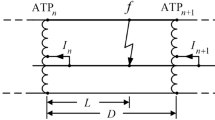Abstract
The least mean kurtosis (LMK) algorithm has been successfully applied to linear system identification. It outperforms the conventional least mean square method for Gaussian and non-Gaussian noises. The purpose of this work is to apply the LMK algorithm to active noise control (ANC) systems, i.e., to develop a filtered-x LMK (FxLMK) algorithm. The proposed FxLMK algorithm is robust against the attenuation of various noise interferences in ANC system. To further improve the noise reduction performance, a recursive sampled variance method is incorporated into the FxLMK algorithm, resulting in an improved FxLMK (IFxLMK) algorithm without significantly increasing the computational burden. Simulations in the various noise inputs show the effectiveness of the proposed algorithms. Moreover, the traction substation noise control problem is considered in our simulations, and an overall system scheme and simulation studies are conducted. Simulation results demonstrate that the IFxLMK algorithm can improve the convergence rate of adaptive filter and improve the performance of noise reduction.












Similar content being viewed by others
References
M.T. Akhtar, W. Mitsuhashi, Variable step-size based online acoustic feedback neutralization in multiple-channel ANC systems, in Proc. 53rd IEEE Int. Midwest Symp. Circuits Syst., pp. 1073–1076 (2010)
M. Bergamasco, F.D. Rossa, L. Piroddi, Active noise control with on-line estimation of non-Gaussian noise characteristics. J. Sound Vib. 331(1), 27–40 (2012). doi:10.1016/j.jsv.2011.08.025
M. Ferrer, A. Gonzalez, M.D. Diego, G. Pinero, Convex combination filtered-x algorithms for active noise control systems. IEEE Trans. Audio Speech Lang. Process. 21(1), 156–167 (2013). doi:10.1109/TASL.2012.2215595
N.V. George, G. Panda, A robust filtered-s LMS algorithm for nonlinear active noise control. Appl. Acoust. 73(8), 836–841 (2012). doi:10.1016/j.apacoust.2012.02.005
B. Huang, Y. Xiao, J. Sun, G. Wei, A variable step-size FXLMS algorithm for narrowband active noise control. IEEE Trans. Audio Speech Lang. Process. 21(2), 301–312 (2013). doi:10.1109/TASL.2012.2223673
J.K. Hwang, Y.P. Li, A gradient-based variable step-size scheme for kurtosis of estimated error. IEEE Signal Process. Lett. 17(4), 331–334 (2010). doi:10.1109/LSP.2010.2040929
N. Kunchakoori, A. Routray, D.P. Das, An energy function based fuzzy variable step size FxLMS algorithm for active noise control, in Proc. IEEE Region 10 and 3rd Int. Conf. Indust. Inf. Syst., pp. 1–7 (2008)
S.M. Kuo, D.R. Morgan, Active Noise Control Systems: Algorithms and DSP Implementations (Wiley, New York, 1996)
Y.H. Lee, J.D. Mok, S.D. Kim, S.H. Cho, Performance of least mean absolute third (LMAT) adaptive algorithm in various noise environments. Electron. Lett. 34(3), 241–242 (1998). doi:10.1049/el:19980181
L. Lu, H. Zhao, Adaptive Volterra filter with continuous lp-norm using a logarithmic cost for nonlinear active noise control. J. Sound Vib. 364, 14–29 (2016). doi:10.1016/j.jsv.2015.11.029
L. Lu, H. Zhao, B. Chen, Improved-variable-forgetting-factor recursive algorithm based on the logarithmic cost for Volterra system identification. IEEE Trans. Circuits Syst. II 63(6), 588–592 (2016). doi:10.1109/TCSII.2016.2531159
A. Papoulis, Random Variables and Stochastic Processes (McGraw Hill Inc, New York, 1965)
D.I. Pazaitis, A.G. Constantinides, LMS+F algorithm. Electron. Lett. 31(17), 1423–1424 (1995). doi:10.1049/el:19951026
X. Qiu, L. Xun, Y. Ai, C.H. Hansen, A waveform synthesis algorithm for active control of transformer noise: implementation. Appl. Acoust. 63(5), 467–469 (2002). doi:10.1016/S0003-682X(01)00060-3
H. Qu, W. Ma, J. Zhao, B. Chen, Kernel least mean kurtosis based online chaotic time series prediction. Chin. Phys. Lett. 30(11), 1–5 (2013). doi:10.1088/0256-307X/30/11/110505
L. Tan, J. Jiang, Active control of impulsive noise using a nonlinear companding function. Mech. Syst. Signal Process. 58–59, 29–40 (2015). doi:10.1016/j.ymssp.2015.01.010
O. Tanrikulu, A.G. Constantinides, Least-mean kurtosis: a novel higher-order statistics based adaptive filtering algorithm. Electron. Lett. 30(3), 189–190 (1994). doi:10.1049/el:19940129
E. Walach, B. Widrow, The least mean fourth (LMF) adaptive algorithm and its family. IEEE Trans. Inf. Theory 30(2), 275–283 (1984). doi:10.1109/TIT.1984.1056886
L. Wu, X. Qiu, Active impulsive noise control algorithm with post adaptive filter coefficient filtering. IET Signal Process. 7(6), 515–521 (2013). doi:10.1049/iet-spr.2012.0164
L. Wu, H. He, X. Qiu, An active impulsive noise control algorithm with logarithmic transformation. IEEE Trans. Audio Speech Lang. Process. 19(4), 1041–1044 (2011). doi:10.1109/TASL.2010.2061227
L. Zhang, J. Tao, X. Qiu, Active control of transformer noise with an internally synthesized reference signal. J. Sound Vib. 331(15), 3466–3475 (2012). doi:10.1016/j.jsv.2012.03.032
H. Zhao, A practical wavelet domain LMK algorithm for predicting multimedia traffic, in IEEE ICC’08, pp. 515–519 (2008)
H. Zhao, X. Zeng, J. Zhang, Adaptive reduced feedback FLNN filter for active control of nonlinear noise processes. Signal Process. 90(3), 834–847 (2010). doi:10.1016/j.sigpro.2009.09.001
H. Zhao, X. Zeng, X. Zhang, Z. He, T. Li, W. Jin, Adaptive extended pipelined second-order Volterra filter for nonlinear active noise controller. IEEE Trans. Audio Speech Lang. Process. 20(4), 1394–1399 (2012). doi:10.1109/TASL.2011.2175383
H. Zhao, X. Zeng, Z. He, S. Yu, B. Chen, Improved functional link artificial neural network via convex combination for nonlinear active noise control. Appl. Soft Comput. 42, 351–359 (2016). doi:10.1016/j.asoc.2016.01.051
Y. Zhou, Y. Yin, Q. Zhang, An optimal repetitive control algorithm for periodic impulsive noise attenuation in a non-minimum phase ANC system. Appl. Acoust. 74(10), 1175–1181 (2013). doi:10.1016/j.apacoust.2013.04.008
Y. Zhou, Q. Zhang, Y. Yin, Active control of impulsive noise with symmetric \(\alpha \)-stable distribution based on an improved step-size normalized adaptive algorithm. Mech. Syst. Signal Process. 56–57, 320–339 (2015). doi:10.1016/j.ymssp.2014.10.002
Acknowledgments
This work was supported in part by National Natural Science Foundation of China (Grants: 61271340, 61571374, 61433011).
Author information
Authors and Affiliations
Corresponding author
Rights and permissions
About this article
Cite this article
Lu, L., Zhao, H. Improved Filtered-x Least Mean Kurtosis Algorithm for Active Noise Control. Circuits Syst Signal Process 36, 1586–1603 (2017). https://doi.org/10.1007/s00034-016-0379-3
Received:
Revised:
Accepted:
Published:
Issue Date:
DOI: https://doi.org/10.1007/s00034-016-0379-3




